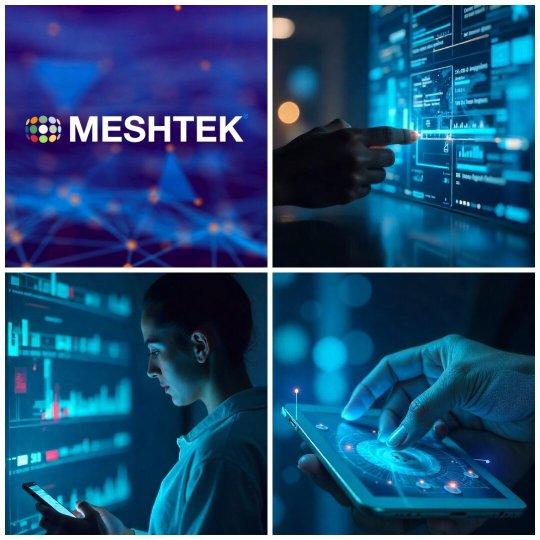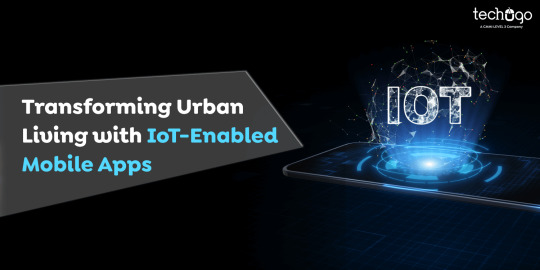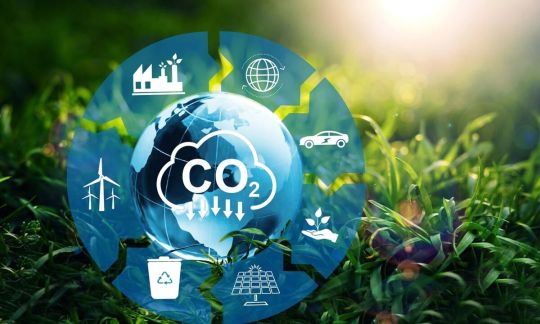#IoTApplications
Explore tagged Tumblr posts
Text
Leading the Future of Smart Connectivity – Top IoT Development Company

MeshTek is redefining the IoT landscape with cutting-edge Bluetooth Mesh solutions designed for scalability, efficiency, and security. As a trusted IoT development company, we specialize in smart automation, AI-driven analytics, and seamless device integration for industries like smart lighting, industrial automation, and more. Experience the power of intelligent connectivity with our innovative IoT solutions.
#IoTDevelopmentCompanies#SmartAutomation#BluetoothMesh#ConnectedDevices#MeshNetworking#AIinIoT#SmartTechnology#IoTSolutions#IndustrialIoT#IoTInnovation#IoTConnectivity#CloudIoT#IoTIntegration#FutureTech#IoTApplications
1 note
·
View note
Text
Why Use IoT In Smart City Development?
The Internet of Things (IoT) plays a pivotal role in building smart cities by enabling the seamless connection of devices, infrastructure, and systems to improve urban living. IoT sensors and devices collect real-time data from transportation networks, energy grids, water systems, waste management units, and public safety platforms. This data-driven approach allows city administrators to make informed decisions, enhance operational efficiency, and reduce resource wastage.
For example, smart traffic management systems use IoT to monitor traffic flow and adjust signals in real-time, minimizing congestion and emissions. Waste bins embedded with IoT sensors notify municipal services when they need to be emptied, reducing unnecessary fuel consumption. Smart lighting systems automatically adjust brightness based on movement and time of day, significantly conserving energy. IoT also enhances public safety by integrating surveillance systems and emergency response networks for quicker action during incidents.
Moreover, the integration of IoT in smart cities fosters sustainable development by optimizing utilities and reducing environmental impact. As urban populations grow, the importance of efficient, scalable, and responsive infrastructure increases making IoT an essential component of modern urban planning.
To explore this transformative technology in-depth, check out an Internet of Things Course.
0 notes
Text
🔗 Unlock the Power of Connected Devices with Smart IoT Application Development!
🌐 The Internet of Things (IoT) is no longer just a trend — it’s transforming industries and creating smarter businesses every day.
At Grootnet Software Solutions, we specialize in custom IoT application development services that help enterprises automate operations, improve decision-making, and deliver real-time value.
🚀 What We Deliver: ✅ Scalable IoT Architecture ✅ Sensor Integration & Device Management ✅ Cloud-Based IoT Platforms ✅ Real-Time Analytics & Dashboards ✅ Secure Data Transmission
💡 Whether you're building a smart factory, enhancing patient monitoring, or launching a connected consumer product — we bring your vision to life with end-to-end IoT solutions.
📈 Let’s make your business future-ready through connected innovation.
📩 Connect with us to get started today!
#IoTDevelopment#SmartSolutions#IoTApplications#ConnectedDevices#InternetOfThings#TechInnovation#GrootnetSoftwareSolutions#IIoT#DigitalTransformation#IoTIndia#IoTUSA#SmartBusiness#CustomIoT
0 notes
Text
0 notes
Text
Global Internet of Things (IoT) Market | Insights: Trends, Innovation Future Projections Rising Growth Business Analysis And 2024 Forecast
Global Internet of Things (IoT) Market: Growth Drivers, Trends, and Future Insights
Introduction
The Global Internet of Things (IoT) Market is expanding rapidly, transforming how industries and individuals interact with technology. From smart homes and healthcare innovations to automation in manufacturing, IoT is reshaping industries worldwide. This article delves into the key drivers behind this growth, emerging trends, regional insights, and how businesses and consumers can benefit from this evolving market.
Market Overview
The IoT Market is set for considerable growth, with projections showing a rise from USD 77.5 billion in 2025 to USD 373.3 billion by 2034, reflecting a compound annual growth rate (CAGR) of 19.1%. Key factors such as technological advancements, increased demand for automation, and the growing adoption of connected devices in sectors like healthcare, transportation, agriculture, and manufacturing are fueling this market expansion.
Download a Complimentary PDF Sample Report@ https://dimensionmarketresearch.com/report/internet-of-things-market/request-sample/
Key Drivers of IoT Market Growth
Technological Innovations Technologies such as 5G, artificial intelligence (AI), and edge computing are major contributors to the IoT market's growth. The rollout of 5G networks enables faster data transfer speeds and reduced latency, crucial for IoT devices that require real-time communication. AI and machine learning are also improving IoT devices' ability to analyze data, predict outcomes, and make decisions autonomously, enhancing operational efficiency.
Demand for Automation Industries across the globe are increasingly adopting automation to improve productivity and reduce costs. IoT-powered solutions enable seamless automation in manufacturing, logistics, and healthcare. For example, IoT-enabled smart factories can monitor machinery performance, predict maintenance needs, and optimize production, contributing to cost savings and operational efficiency.
Consumer Adoption of Smart Devices With the rise in consumer interest, smart devices like home automation products, wearable health devices, and connected appliances are becoming more widespread. The convenience and efficiency offered by these IoT devices are driving their adoption in households and workplaces, pushing the market to expand as more manufacturers release innovative products to meet consumer demand.
IoT in Healthcare In healthcare, IoT devices are revolutionizing patient care and hospital operations. Smart medical beds, wearable health trackers, and patient monitoring systems help provide real-time data, improving patient outcomes and enabling remote care. The integration of IoT in healthcare is significantly enhancing the efficiency of medical services, leading to a growing demand for IoT solutions in this sector.
Connect with our team to discuss custom solutions@ https://dimensionmarketresearch.com/enquiry/internet-of-things-market/
Regional Insights into the IoT Market
North America: Market Leader North America is expected to lead the global IoT market, holding 37.7% of the revenue share by 2025. The U.S. and Canada are at the forefront of IoT adoption, driven by advanced infrastructure, robust technological development, and significant investments in IoT applications across various sectors. Industries such as smart manufacturing, healthcare, and connected vehicles are particularly driving growth in this region.
Europe: Expanding Market Europe is also seeing rapid growth in IoT adoption, with countries like Germany, the United Kingdom, and France contributing significantly to market expansion. IoT solutions are being increasingly integrated into energy management, smart cities, and precision agriculture, driven by the region’s emphasis on sustainability and environmental responsibility. Furthermore, the European Union’s strict regulations on data privacy and security are promoting safe and secure IoT development.
Asia-Pacific: High Growth Potential The Asia-Pacific (APAC) region is emerging as a strong player in the global IoT market. Countries like China, India, Japan, and South Korea are embracing IoT technologies for smart city initiatives, agricultural IoT, and supply chain management. With a large, tech-savvy population and growing industrialization, IoT adoption is accelerating, making APAC a key region for future market expansion.
Rest of the World: Growing Opportunities Emerging regions such as the Middle East and Africa are also contributing to the global IoT market growth. Governments in these regions are increasing investments in IoT technologies, particularly in sectors like infrastructure, energy, and public safety. The expanding internet and mobile device penetration in these areas is expected to drive the growth of IoT solutions, providing new opportunities for businesses.
You Can Buy this Premium Report@ https://dimensionmarketresearch.com/checkout/internet-of-things-market/
Emerging Trends in the IoT Market
Edge Computing Edge computing is gaining traction as it allows IoT devices to process data locally rather than sending it to centralized data centers. This reduces latency, enhances real-time data processing, and is especially important for applications that require immediate action, such as autonomous vehicles and industrial IoT systems.
AI and Machine Learning in IoT AI and machine learning are becoming integral components of IoT solutions, allowing devices to process vast amounts of data and make intelligent decisions. These technologies are helping to predict equipment failures, optimize resource allocation, and improve operational efficiency, making IoT devices more autonomous and self-sufficient.
Cybersecurity Challenges As the number of connected devices grows, so do concerns about security and data privacy. IoT devices can be vulnerable to cyberattacks, and companies need to invest in robust security systems to protect their networks and data. This increasing demand for secure IoT solutions is driving innovations in cybersecurity for IoT applications.
FAQs
What is the projected size of the IoT Market in 2025? The IoT Market is expected to be valued at USD 77.5 billion by 2025.
Which region is expected to dominate the Global IoT Market? North America is expected to lead the IoT market, holding a 37.7% share of global revenue by 2025.
Which industries are driving the growth of IoT adoption? Industries such as smart manufacturing, healthcare, connected vehicles, agriculture, and smart cities are driving the demand for IoT solutions.
How is IoT transforming the healthcare industry? IoT is revolutionizing healthcare by enabling remote patient monitoring, improving operational efficiencies, and enhancing patient care with devices like wearable sensors and smart medical beds.
What are the key trends influencing the IoT market? Key trends include the integration of AI and machine learning with IoT devices, the rise of edge computing, and increasing concerns about cybersecurity and privacy.
Conclusion
The Global Internet of Things (IoT) Market is set for remarkable growth, driven by technological advancements, the increasing demand for automation, and the growing adoption of connected devices. North America is expected to lead the market, while Europe and Asia-Pacific are also experiencing significant expansion. As IoT continues to evolve with trends like AI integration, edge computing, and healthcare applications, it promises to revolutionize industries and improve daily life. The future of IoT offers exciting opportunities for businesses and consumers alike, positioning IoT as a transformative force for innovation and growth.
#IoT#InternetOfThings#SmartDevices#ConnectedDevices#IoTMarket#TechInnovation#SmartHome#Industry40#IoTApplications#BigData#CloudComputing#AI#ArtificialIntelligence#MachineLearning
0 notes
Text
Transforming Urban Living with IoT-Enabled Mobile Apps

IoT-enabled mobile apps are revolutionizing urban living by enhancing smart homes, transportation, and city management. These apps enable real-time monitoring, automation, and efficient resource management, improving convenience and sustainability. From smart security to energy optimization, discover how IoT-driven apps are shaping the future of connected cities and enhancing daily life for urban residents
#IoTenabledmobileapps#IoTinsmartcities#IoTappdevelopment#mobileappdevelopmentcompanyinUAE#roleofIoTinsmartcities#IoTapplications
0 notes
Text
The future of custom software development is critical for businesses aiming to thrive in a rapidly evolving digital landscape. Staying ahead means adopting smarter, scalable, and secure solutions that align with global demands.
Custom software empowers businesses to innovate, streamline operations, and meet customer expectations effectively.
At Kody Technolab, we specialize in crafting tailored solutions that ensure your business stays competitive and future-ready.
Let’s work together to unlock your potential. Learn more:
#CustomSoftwareDevelopment#SoftwareTrends2025#TechLeaders#DigitalTransformation#AIInSoftwareDevelopment#InnovativeTechnologies#CloudSolutions#AgileDevelopment#DevOpsPractices#LowCodeRevolution#IoTApplications#BlockchainTechnology#CybersecurityExperts#UXUIDesign#FutureOfTech#SustainableSoftware#AIForBusiness#DataDrivenInsights#EnterpriseSolutions#TechEntrepreneurs
0 notes
Text
youtube
Unleashing the Potential of IoT: Revolutionizing Connectivity with BLE Mesh Technology the transformative power of Bluetooth Low Energy (BLE) Mesh technology in this insightful video. Learn how BLE Mesh is revolutionizing IoT by enabling seamless, long-range connectivity for smart homes, industrial automation, agriculture, and more. Discover its key features, including self-healing networks, low energy consumption, and real-time data exchange, making it the perfect solution for scalable and efficient IoT applications. Dive into the future of IoT innovation with BLE Mesh technology!
#BLEMeshTechnology#IoTInnovation#SmartConnectivity#IoTApplications#BluetoothLowEnergy#IndustrialAutomation#SmartHomes#IoTRevolution#SelfHealingNetworks#IoTSolutions#ScalableIoT#LowEnergyIoT#SmartAgriculture#IoTOptimization#FutureOfConnectivity#Youtube
1 note
·
View note
Text
youtube
IoT Applications and Developments in the Agriculture and Healthcare Industries
0 notes
Text
The future of IoT will transform industries with enhanced connectivity, smart automation, data-driven insights, evolving everyday life and boosting efficiency.
#best college of engineering in trichy#best autonomous college of engineering in trichy#krce the top engineering college in trichy#top college of engineering in trichy#InternetofThings#IoTInnovations#IoTTrends#SmartDevices#ConnectedTechnology#IoTSecurity#IoTApplications
0 notes
Text
0 notes
Text
Discover the transformative applications of the Internet of Things (IoT) across industries such as healthcare, agriculture, manufacturing, and smart cities. Learn how IoT is improving efficiency, safety, and convenience.
0 notes
Text
#SupplyChainTechnology#DigitalTransformation#LogisticsOptimization#AIinSupplyChain#IoTApplications#BlockchainInSCM#InventoryManagement#CloudComputing
0 notes
Text
Which of the Following Is a Key Challenge in Implementing IoT Systems?
Unlock the power of Implementing IoT Systems with our cutting-edge solutions. From smart homes to industrial automation, we've got you covered. Transform your operations, enhance efficiency, and unlock new possibilities with our IoT Development Company.

#IoTDevelopment#IoTSolutions#SmartTechnology#Innovation#DigitalTransformation#IoTApplications#appdevelopmentcompany#iotappcompany
0 notes
Text

Why Energy management Team is necessary for your Industry?
The Critical Role of Energy in Economic Growth and Prosperity
Energy is a fundamental driver of economic growth and overall prosperity. Its availability and reliability are paramount concerns not only for individuals but also for organizations and nations. Presently, the majority of our energy is derived from fossil fuels, which come with significant costs and environmental impacts. Given the depletion of fossil fuel resources, future energy availability and reliability remain a major concern.
Challenges in the Indian Region
Over the past few years, there has been a noticeable increase in energy consumption, posing significant challenges for Our countries. These nations are under pressure to strategically plan and manage their energy use to ensure sustainability and economic stability.
Pro-active Energy Management Initiatives
Recognizing the urgent need for sustainable energy management, several Region have developed or are in the process of developing comprehensive energy management strategies. These strategies aim to diversify energy sources, promote the use of clean energy, and reduce energy consumption while maintaining or improving the quality of life.

Paris Agreement and India’s global warming challenges
India, under the Paris Agreement, committed to reducing its emissions intensity of GDP by 45% by 2030. This commitment aligns with the broader goal of mitigating greenhouse gas emissions outlined in the agreement.

Organizational Role in Energy Management
Organizations must align their internal policies with government initiatives to thrive in the evolving energy market. Here are key reasons why energy management should be integral to organizational activities and future plans
Cost Reduction and Growth Opportunities
Managing energy expenditures is crucial for supporting organizational growth. Continued business-as-usual practices will likely lead to increased energy costs due to rising tariffs, equipment performance degradation, and additional operational requirements. Effective energy management can reduce these costs, freeing up resources for future investments and growth.
Reduction of Risk
As countries set higher targets for energy efficiency, regulatory compliance will become mandatory. Energy costs in the Region are heavily subsidized, but tariffs are expected to rise, posing risks to organizational profitability. For instance, Indian electricity tariffs increased in January 2017, and similar hikes occurred in other cities. Pro-active energy management can reduction of these risks by improving energy supply reliability and reducing peak demand.
Improved Energy Efficiency Ratings and Branding
Organizations that prioritize energy efficiency can enhance their market position and brand reputation. Energy efficiency ratings, such as those being introduced in India, will influence tenant preferences and building competitiveness. Buildings with low energy efficiency ratings may need to offer additional benefits to attract tenants.
Standardization and Regulations
Similarly, regulatory frameworks and standards in India have been introduced to support the adoption of energy-efficient technologies. The Bureau of Energy Efficiency (BEE) has implemented energy labelling programs for appliances, which set minimum efficiency standards and encourage the use of more energy-efficient products. These initiatives are part of a broader effort to promote energy conservation and reduce the environmental impact of energy consumption.

Additional Benefits
Effective energy management offers numerous other benefits, including:
Environmental: Reduced environmental impacts and carbon emissions.
Quality of Life: Improved indoor air quality and overall health.
Management Tool: Benchmarking and tracking the efficiency of production or services.
Procurement: Enhanced evaluation of competitiveness and life cycle impacts during system upgrades.
In summary, energy management is essential for reducing costs, mitigating risks, enhancing brand reputation, complying with regulations, and achieving broader environmental and quality-of-life benefits. Organizations must actively engage in energy management to support governmental initiatives and secure a sustainable future.
#SmartEnergy#Sustainability#RenewableEnergy#EnergyEfficiency#SmartMeterRevolution#Niraltek#NiraltekTeam#InternetOfThings#ESP32#ESP32Development#ESP32Project#ConnectedDevices#IoTInnovation#IoTProject#IoTDevices#IoTSecurity#IoTApplications#IoTDevelopment#IoTTechnology#ESP32Electronics#ESP32Innovation#IIoTTechnology#IIoTInnovation#IndustrialIoT#EnergyUsage
0 notes
Text
Identiv Launches Bitse.io 3.0 IoT Connecting Cloud With Advanced Supply Chain And Brand Protection Features

Identiv, Inc. introduces the latest version of its global IoT connecting cloud platform, bitse.io 3.0, which is set to revolutionize supply chain management, brand protection, and customer engagement. This updated platform streamlines the deployment of cutting-edge IoT applications, allowing for swift market entry with state-of-the-art RFID and IoT technologies. By providing built-in support for encrypted and tamper-proof tags, industries like healthcare, retail, and logistics can seamlessly implement secure IoT solutions without the need for extra coding, ultimately saving time and costs. The new Supply Chain Insights feature offers in-depth analytics by seamlessly integrating with enterprise systems, aiding in compliance with upcoming regulations and supporting sustainability efforts.
Amir Khoshniyati, VP and GM of Identiv IoT, emphasizes that bitse.io 3.0 signifies a significant step forward in empowering businesses with innovative IoT solutions, speeding up time to revenue, and maintaining a competitive advantage.
bitse.io 3.0 is especially advantageous for brands seeking to boost consumer engagement, providing smooth content delivery and deeper insights into customer preferences for more impactful marketing campaigns and increased brand loyalty.
A trial run in the wine and spirits industry demonstrates the value of bitse.io 3.0, where a prominent producer successfully deploys the platform for product authentication and traceability while offering an immersive virtual experience to enhance customer loyalty. The platform's enhanced functionalities offer real-time visibility and advanced traceability, making it an ideal solution for sectors such as healthcare, pharmaceuticals, medical devices, smart packaging, specialty retail, and industrial applications.
To witness bitse.io in action, interested parties can complete a form or reach out to [email protected].
Read More - https://www.techdogs.com/tech-news/business-wire/identiv-launches-bitseio-30-iot-connecting-cloud-with-advanced-supply-chain-and-brand-protection-features
#Identiv#NetworkSecurity#SecuritySolutions#Authentication#RadioFrequencyIdentification(RFID)#IoTApplications#SupplyChainManagement
0 notes